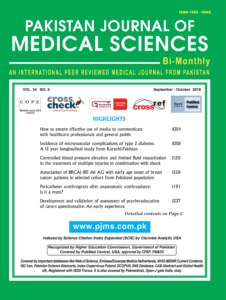Correlation of circulating inflammatory markers, ghrelin, adiponectin with obesity indices in subjects with metabolic syndrome
Authors
Mojgan Gharipour1, Masoumeh Sadeghi2, Marjan Mansourian3, Elham Andalib4,
Mohammad Talaie5, Noushin Mohamadifard6, Nizal Sarrafzadegan
Affiliations
Abstract
Objective: The goal of this study was to evaluate the association of obesity indices with circulating inflammatory markers in subjects diagnosed Metabolic Syndrome (MetS). Methodology: Random selection of individuals’ samples from participants of Isfahan Cohort Study (ICS) was used. Only subjects who met the National Cholesterol Education Program’s Adult Treatment Panel III (ATP-III) criteria were included in the study. All participants underwent a 30-minute face to face interview to complete validated questionnaires. A trained nurse measured obesity indices such as body mass index (BMI), waist circumference (WC), waist to hip ratio (WHR) and waist to height ratio (WHtR). Serum total cholesterol, triglycerides, HDL, LDL, fasting blood glucose, interleukin-6 (IL-6), interleukin-10 (IL-10), adiponectin, ghrelin and CRP were also measured. The Mann- Whitney U test was used to compare the inflammatory markers in subjects with and without MetS. Correlation coefficients between inflammatory biomarkers and obesity indices were evaluated in participants with MetS using Pearson Coefficient correlation test. Results: In subjects with MetS, WC and BMI were significantly higher compared to subjects without MetS (P < 0.001). We found the median Interquartile range (IQR) of CRP was significantly higher in subjects with MetS (P < 0.001). Adiponectin and ghrelin level showed no significant difference in subjects with or without MetS. Subjects with MetS had a statistically significant positive correlation between IL6 and WHtR (r =0.367, P = 0.015). No significant correlation was found between IL-10, ghrelin, adiponectin and CRP with BMI, WHtR and WC. Negative correlation was observed for adiponectin and the WC (r = -0.367, P = 0.026) as well. Conclusion: Our findings indicate that in subjects diagnosed with MetS, only IL6 had positive association with WHR and no significant correlation between all other inflammatory markers with Obesity Indices was found.

